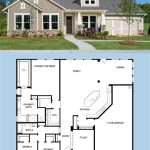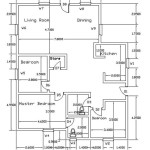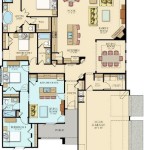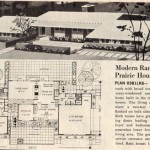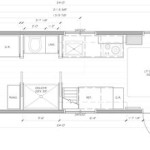```html
Why Are There Suddenly So Many Planes Flying Over My House?
An increase in aircraft activity overhead can be a noticeable and sometimes unsettling phenomenon. Understanding the reasons behind this sudden change requires considering a range of factors, from shifts in air traffic patterns and seasonal adjustments to the influence of external events and modifications in airspace management.
Changes in Air Traffic Patterns and Route Optimization
One of the primary reasons for a surge in aircraft overflights relates to the dynamic nature of air traffic patterns. Air routes are not static; they are constantly being evaluated and adjusted based on a variety of factors, including fuel efficiency, weather conditions, and congestion levels. Air Navigation Service Providers (ANSPs), such as the Federal Aviation Administration (FAA) in the United States or Eurocontrol in Europe, are responsible for managing airspace and optimizing flight paths to ensure safety and efficiency.
These organizations utilize sophisticated modeling and simulation tools to analyze air traffic flows and identify opportunities for improvement. Changes can be implemented to shorten routes, reduce delays, or minimize environmental impact. For example, the introduction of Performance-Based Navigation (PBN) techniques, which rely on satellite navigation and advanced flight management systems, has allowed aircraft to fly more precise and optimized routes. This can lead to increased concentration of air traffic along specific corridors, potentially resulting in a noticeable increase in flights over certain residential areas.
Furthermore, airspace redesign projects are often undertaken to modernize air traffic management systems and accommodate growing air travel demand. These projects can involve significant alterations to flight paths, resulting in new routes being established or existing routes being shifted. While these changes are typically designed to improve overall system efficiency and safety, they can inadvertently lead to increased noise and traffic over previously unaffected areas. The notification process for such changes can vary, and residents may not always be fully aware of the potential impacts until after the implementation.
The implementation of Required Navigation Performance (RNP) procedures is another factor to consider. RNP allows planes to fly very precise curved approaches to airports, which can concentrate flights along specific paths, increasing the number of aircraft passing over certain locations. These procedures are often implemented to improve safety in challenging terrain or to reduce noise impact on other communities, but they can shift the burden to different areas.
Moreover, temporary route adjustments are commonplace due to weather events. Severe weather, such as thunderstorms, hurricanes, or strong winds, can necessitate rerouting aircraft to avoid hazardous conditions. These reroutes often involve diverting traffic away from established airways and directing it over alternative routes, which may include areas that do not typically experience high levels of air traffic. These diversions are generally temporary, but during periods of prolonged or frequent weather disruptions, residents may notice a sustained increase in aircraft overflights.
Seasonal Variations and Increased Flight Schedules
Another contributing factor can be seasonal variations in air travel demand. Certain times of the year, such as summer vacation periods, holidays, and peak tourist seasons, typically witness a significant increase in air travel. Airlines respond to this increased demand by adding flights to their schedules, which can lead to a corresponding increase in air traffic over specific areas.
The increase in flight schedules is not uniform across all routes. Popular destinations and major transportation hubs are more likely to experience a substantial increase in traffic during peak seasons. This can result in a disproportionate increase in aircraft overflights in areas located near these airports or along major air corridors leading to them. Residents living in these areas may notice a marked difference in the frequency and intensity of aircraft noise during these periods.
Seasonal weather patterns also play a role. During the winter months, for example, prevailing wind patterns may favor certain runway configurations at airports, leading to a higher concentration of arrivals and departures over specific communities. Similarly, changes in temperature and atmospheric conditions can affect aircraft performance and necessitate adjustments to flight paths, potentially leading to increased overflights in certain areas.
Furthermore, the timing of flights can be a factor that contributes to the perception of increased air traffic. Airlines often schedule flights to maximize aircraft utilization and accommodate passenger demand. This can result in a higher concentration of flights during certain times of the day, such as early morning or late evening, which may be particularly noticeable to residents accustomed to quieter periods.
In addition to scheduled commercial flights, increased freight traffic can also contribute to the overall volume of aircraft overflights. E-commerce and global supply chains have led to a significant increase in air cargo operations, particularly during peak shipping seasons. These cargo flights often operate at night or during off-peak hours, which can further exacerbate the perception of increased air traffic in residential areas.
External Events and Changes in Airspace Management
External events, such as major sporting events, political gatherings, or natural disasters, can also trigger a temporary surge in air traffic. These events often require the deployment of additional aircraft to transport attendees, security personnel, and emergency responders. This can lead to a noticeable increase in aircraft overflights in areas located near the event venue or along the routes used to access it.
Changes in airspace management, such as the opening or closing of military operating areas (MOAs) or the implementation of temporary flight restrictions (TFRs), can also affect air traffic patterns. MOAs are designated areas where military aircraft conduct training exercises. When an MOA is active, civilian aircraft are typically prohibited from entering the area, which can necessitate rerouting traffic around it. Similarly, TFRs are temporary restrictions on air traffic imposed for security or safety reasons, such as during presidential visits or major public events. These restrictions can also force aircraft to alter their flight paths, leading to increased overflights in other areas.
Another factor to consider is the impact of technological advancements in air traffic management. The Next Generation Air Transportation System (NextGen) initiative in the United States, for example, aims to modernize the nation's air traffic control system by implementing new technologies and procedures. While NextGen is designed to improve overall efficiency and safety, some of its components, such as Area Navigation (RNAV) routes, can concentrate air traffic along specific corridors, potentially leading to increased overflights in certain areas. The transition to these new technologies can be gradual, and the full impact on air traffic patterns may not be immediately apparent.
The COVID-19 pandemic also had a significant impact on air traffic patterns. During the initial stages of the pandemic, air travel demand plummeted, leading to a substantial reduction in flights. However, as travel restrictions have eased and demand has rebounded, airlines have gradually increased their schedules. This resurgence in air traffic can be particularly noticeable in areas that experienced a significant reduction in overflights during the pandemic. The adjustment to new schedules and the renegotiation of flight paths can lead to perceived increases in air traffic volume.
Finally, local factors, such as the construction of new housing developments or the expansion of existing airports, can contribute to the perception of increased air traffic. New housing developments that are located closer to existing flight paths may experience higher levels of aircraft noise compared to areas that are further away. Similarly, the expansion of an airport can lead to an increase in the number of flights operating to and from that airport, which can result in increased overflights in surrounding communities.
```Why Are There So Many Planes Flying Over My Neighborhood Does It Seem Like More In The Sky Now Than Ever Before Quora
Why Are The Military Jets Flying Over My House For Hours When Air Show Doesn T Start Until This Weekend Is Not Practice Quora
Why Are The Military Jets Flying Over My House For Hours When Air Show Doesn T Start Until This Weekend Is Not Practice Quora
Why Are The Military Jets Flying Over My House For Hours When Air Show Doesn T Start Until This Weekend Is Not Practice Quora
I Had About 30 Planes Flying Over My House Today Leaving One Streak Of White Lines Is It Crazy To Have That Many At Once Quora
Why Are The Military Jets Flying Over My House For Hours When Air Show Doesn T Start Until This Weekend Is Not Practice Quora
Why Would A Fighter Jet Be Flying Over City Late At Night Quora

Why Are Military Helicopters Flying Over My House Fully Explained

Eastie Rattled By Low Flying Planes Boston Herald

What Plane Just Flew Over My House Here S An Easy Way To Find Out
Related Posts


